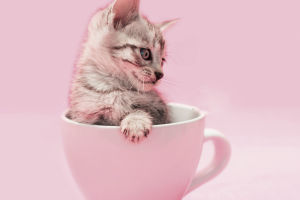The Black Swan is a precious species in the swan family, so called because its feathers are black.
The newborn baby black swans have grayish-brown feathers, while the edges are close to pale white.
The adult Black Swan is dark gray or gray-brown in color, but its belly is gray-white and its flight feathers are white.
When the Black Swan senses danger and spreads its wings to indicate an attack, it can see its white feathers.
The food of black swans is mainly a variety of aquatic plants and algae, and occasionally eat some small fish and shrimp.
Since Black Swans do not dive, they usually look comical when feeding, showing their black "big buttocks".
Like other swans, black swans are "monogamous" in marriage. Some studies have found that black swans have a very stable relationship with their mates, and the "divorce rate" is very low, according to statistics, only 6%.
However, the apparently inseparable relationship may not be a true reflection of their mating relationship, another molecular biology study may disappoint: in the 85 pairs of black swans,32 pairs (about 38%) occurred "cheating" behavior (nest offspring from more than two fathers).
The social relationships of black swans are also complex. A study of black swans in captivity found that in addition to 65% of black swans being "one male.
In one female" monogamous pair, there were 5% of male pairs and 14% of "two male, one female" pairs.
These male pairs take over the nests of other Black Swans and take the eggs in the nest for themselves, or form a "threesome" with a female and then raise their offspring together.
While the black swans are incubating their eggs, the other party is often on guard near the nest.
Once another swan approaches the nesting area, the watchful party will emit a distant call like a trumpet or a series of soft murmurs, with feathers standing up, neck in an attack position.
And expel the other party.
Regardless of typhoons, hot sun, or heavy rain, the black swan couple will stand firm day and night until the chicks emerge.
The whole incubation time lasts 35 to 40 days.
It is found that after a whole incubation period, the parent bird will lose 1 to 1.2 kg, the color of the bill will become lighter and the coat will become gray.
The most common in life is the white swan, so what is the difference between the black swan and the white swan, in addition to the different colors?
The most important difference lies in the treatment of feelings, the white swan is very difficult to choose a mate, while the black swan is easy to choose a mate.
Black Swan in the loss of a spouse immediately after the combination with another Black Swan, if from the perspective of reproduction of offspring to consider.
The loss of a spouse to continue is not a very excessive thing.
Because this is the only way to ensure its reproductive rate.
The most important feature of black swans is that the hatching rate and the survival rate of the goslings are very high.
For farmers to create economic benefits laid a very good foundation, so a year of spring and autumn breeding.
A pair of breeding geese can breed 40 to 50 baby geese a year.


